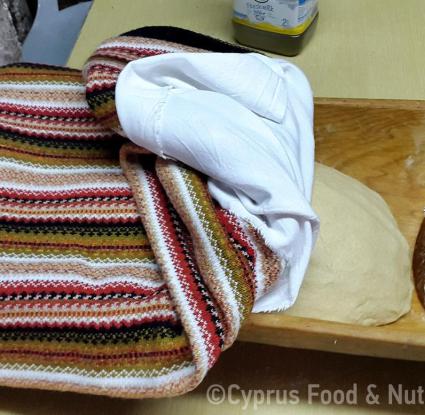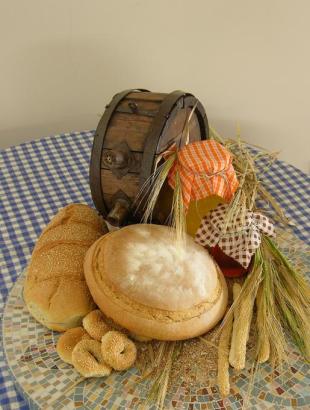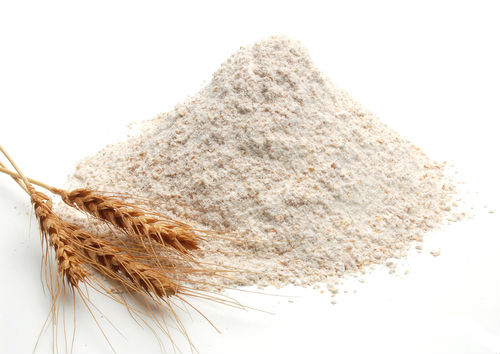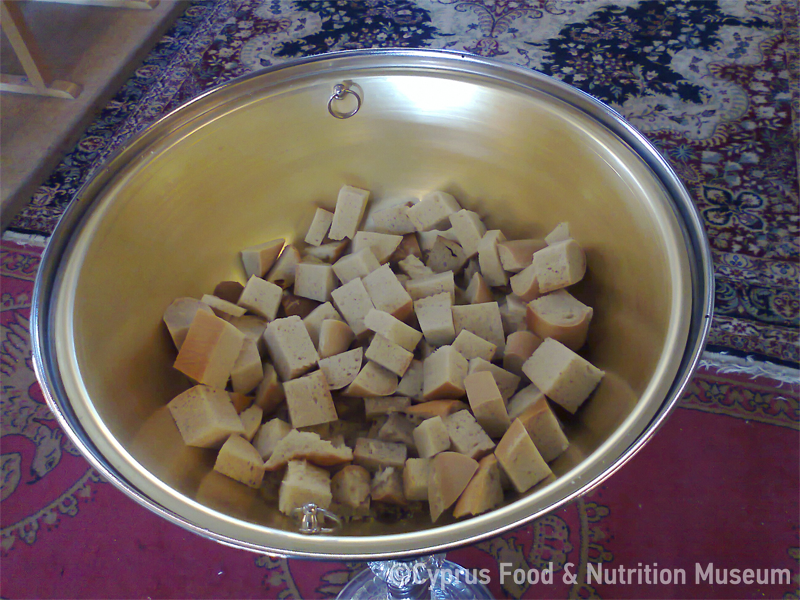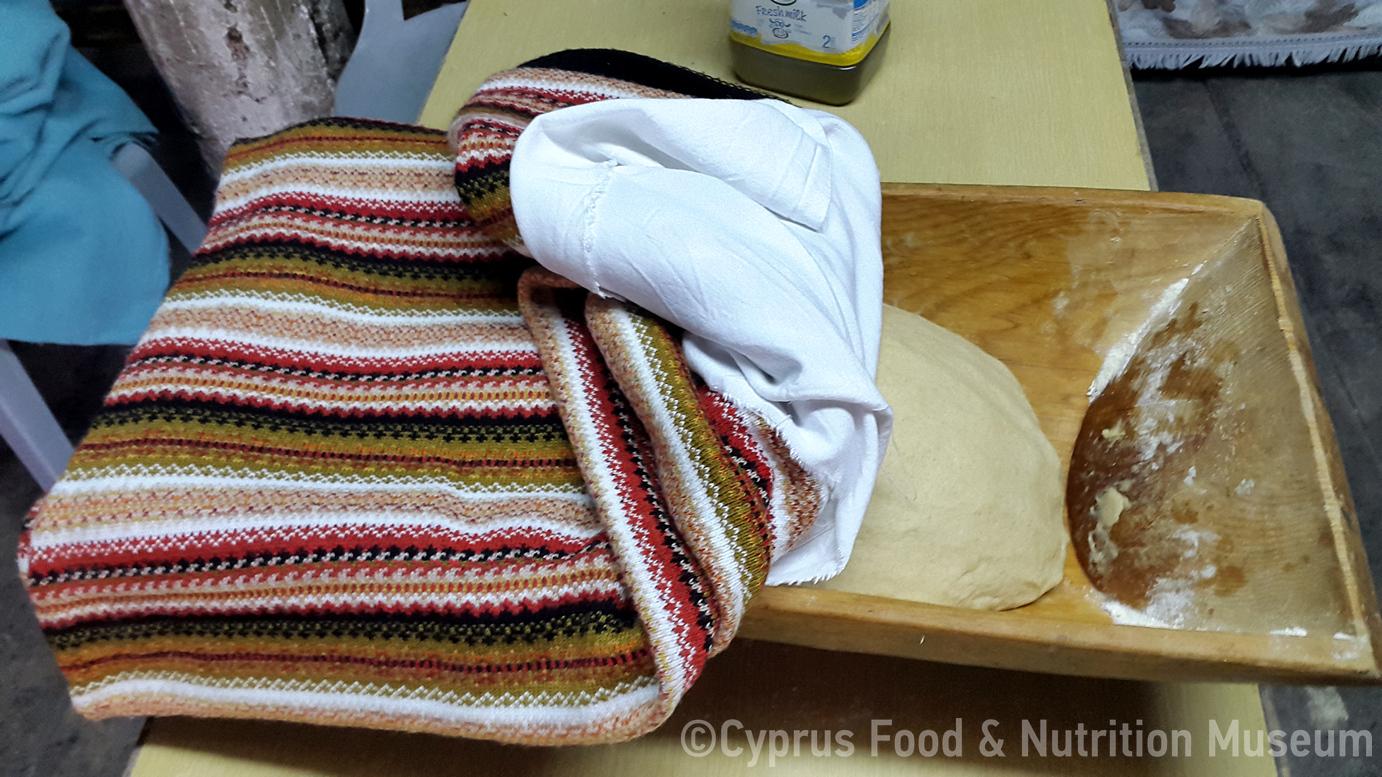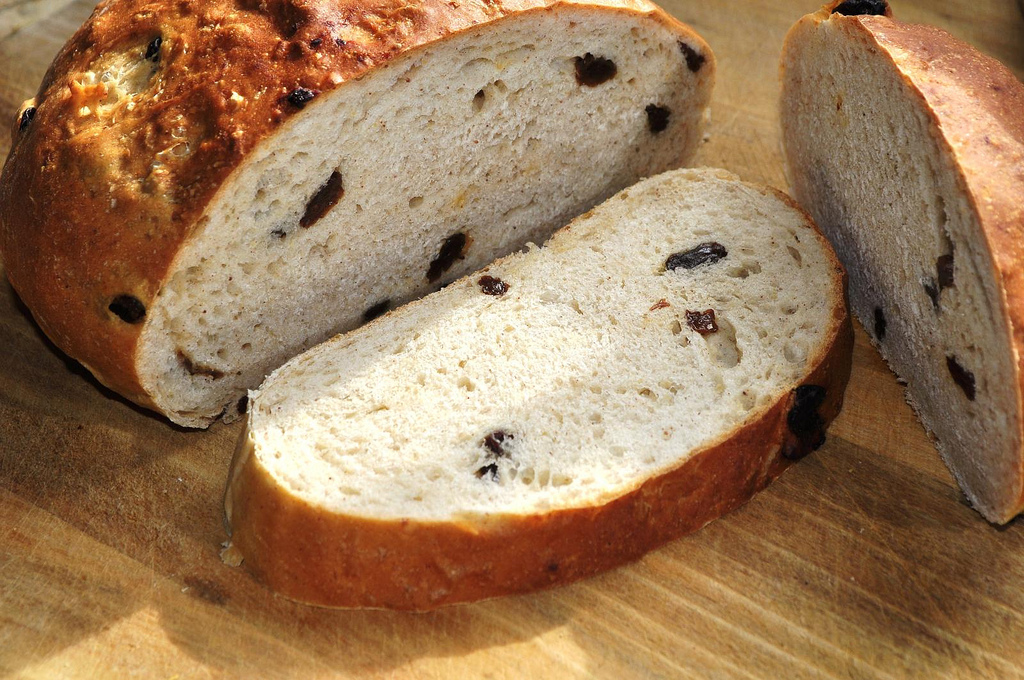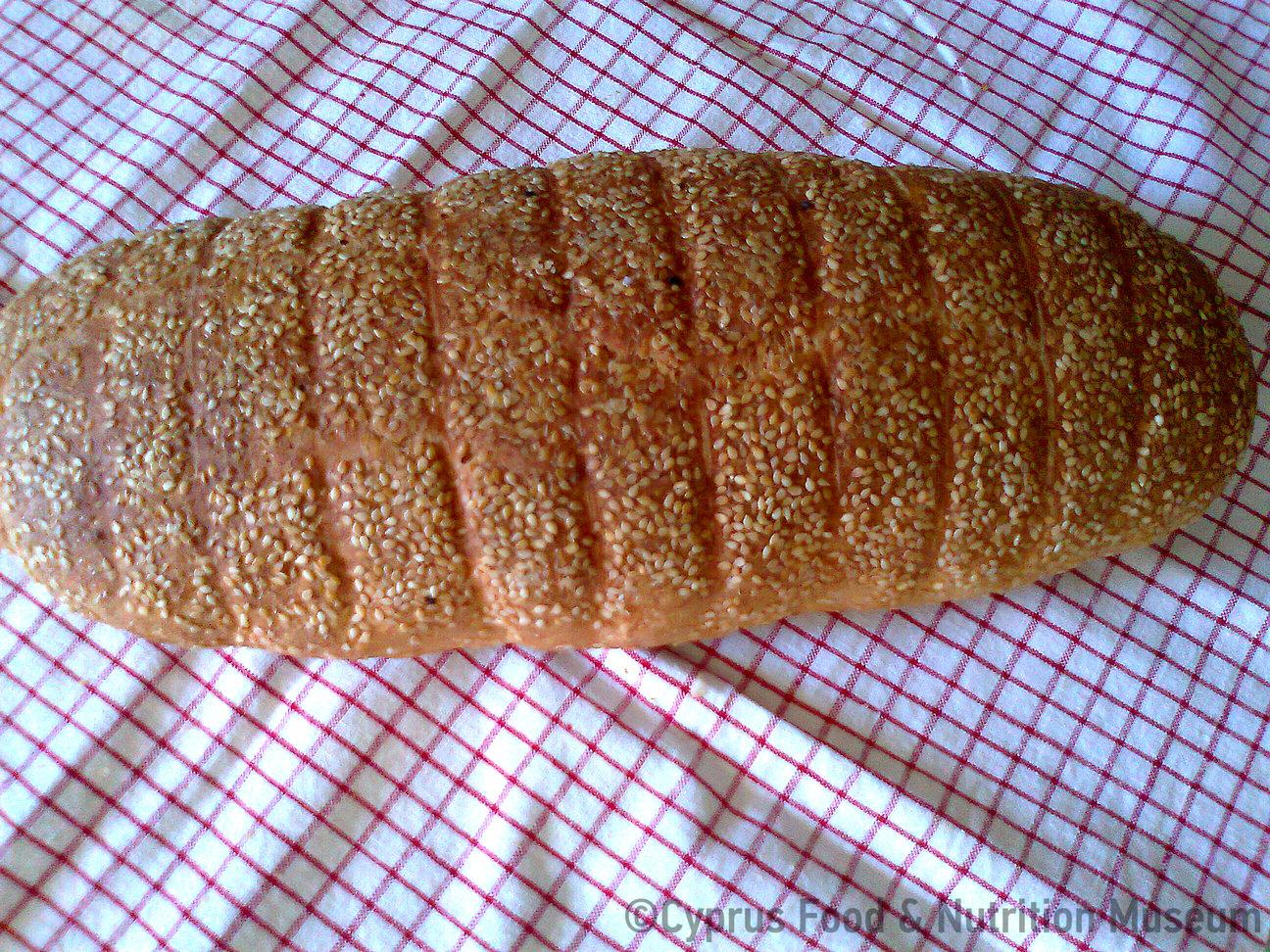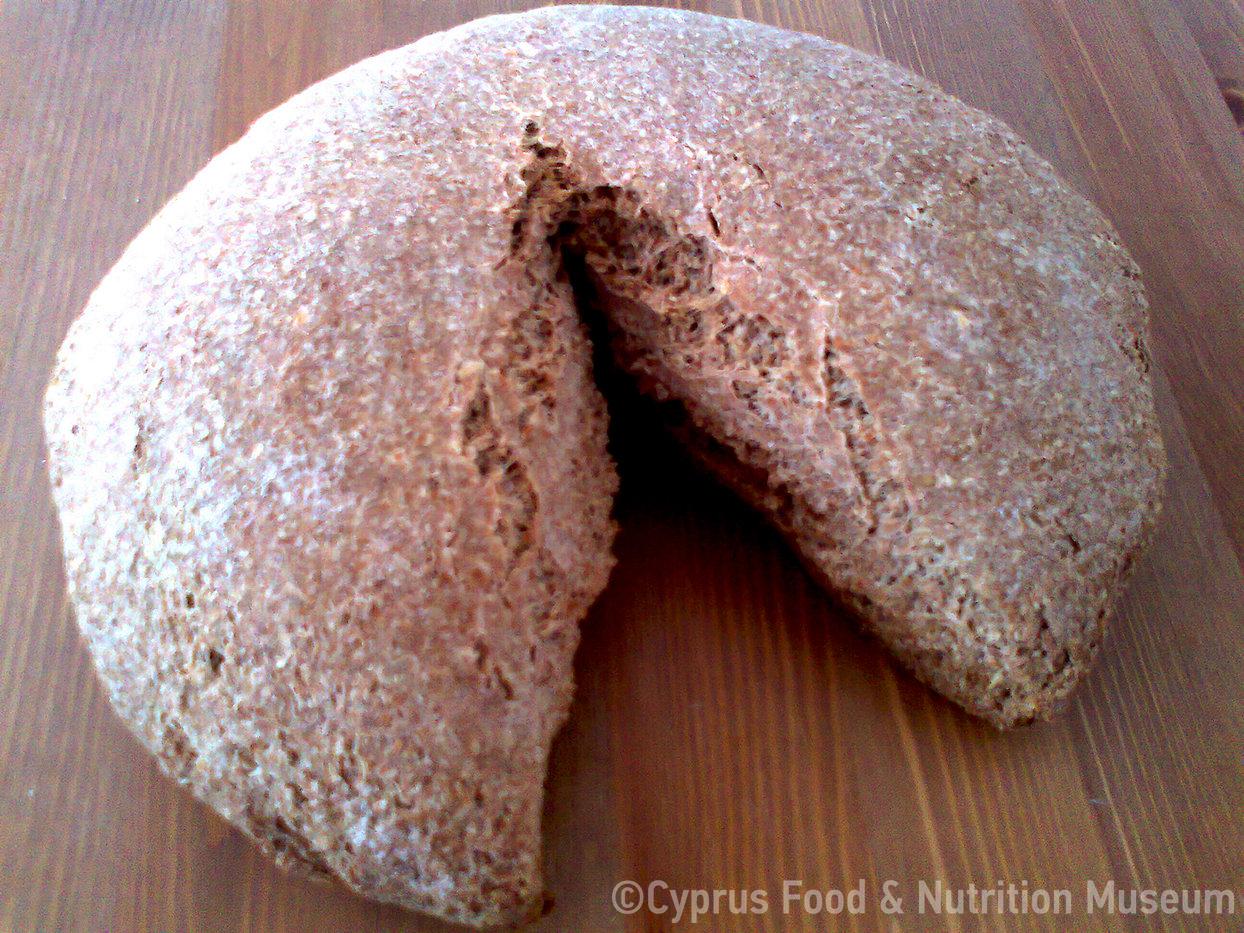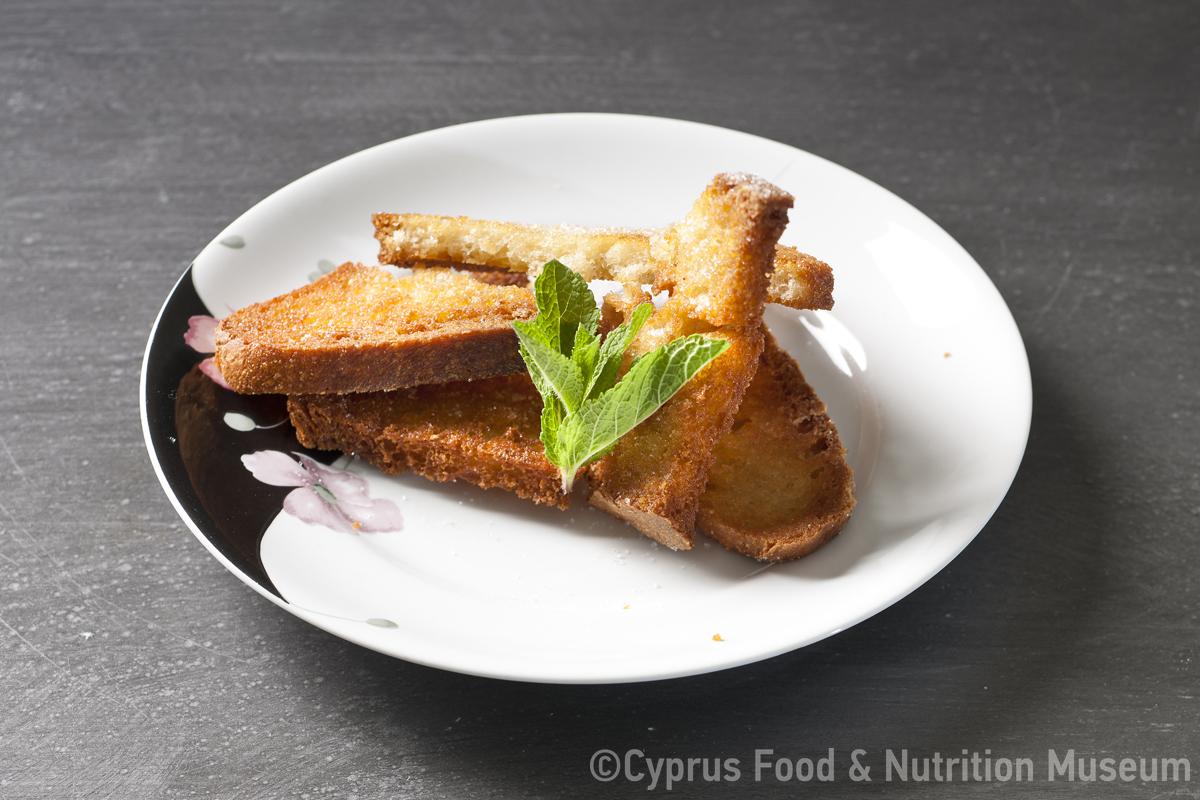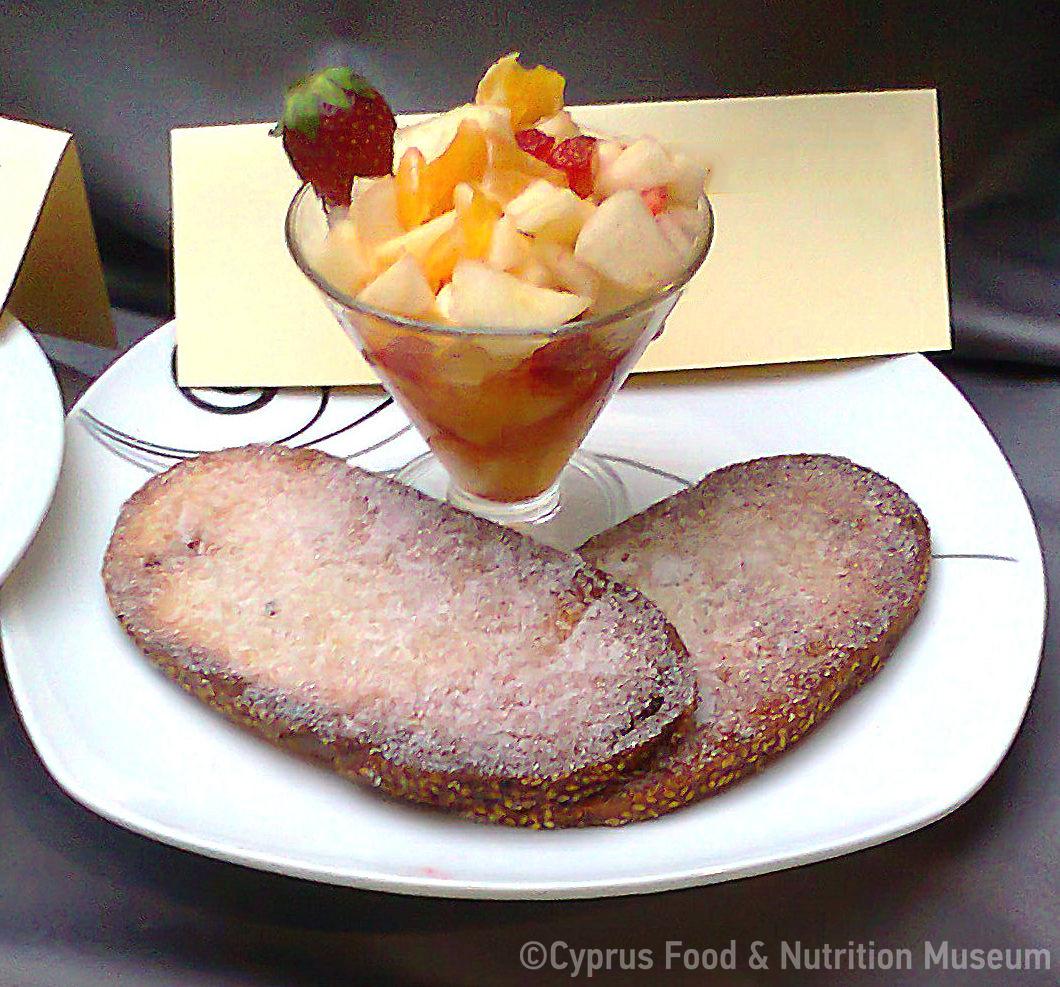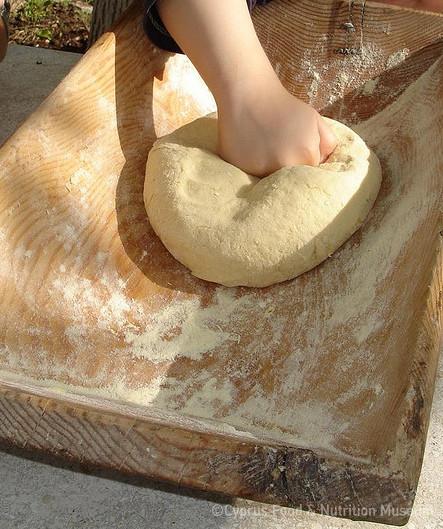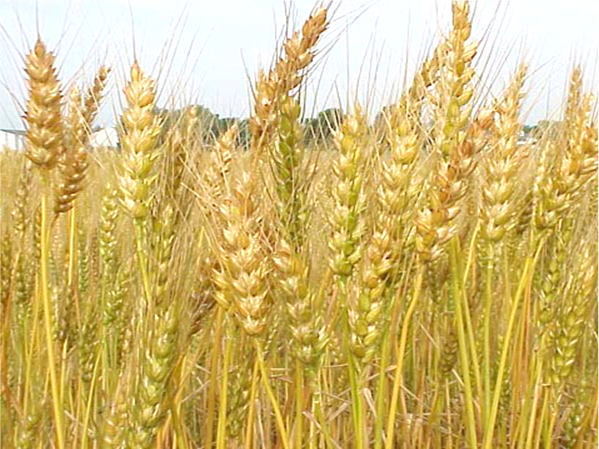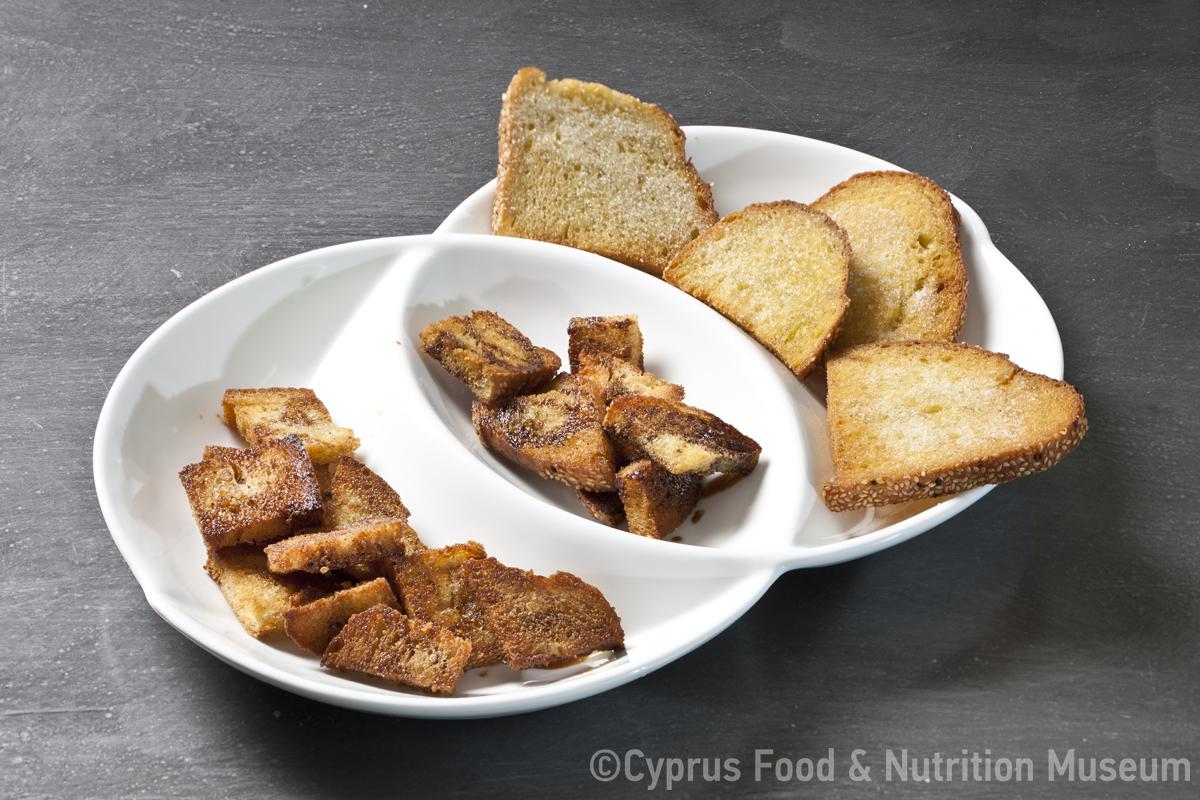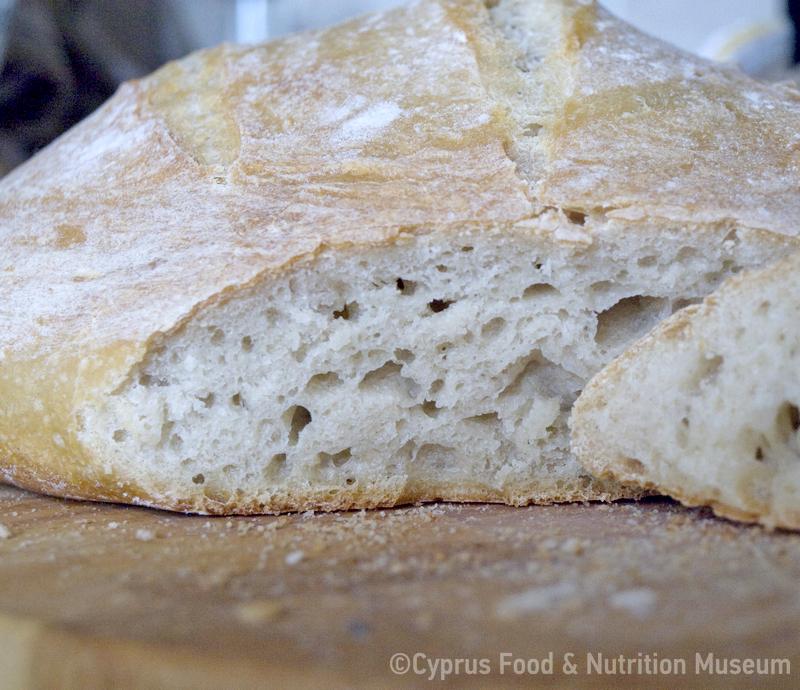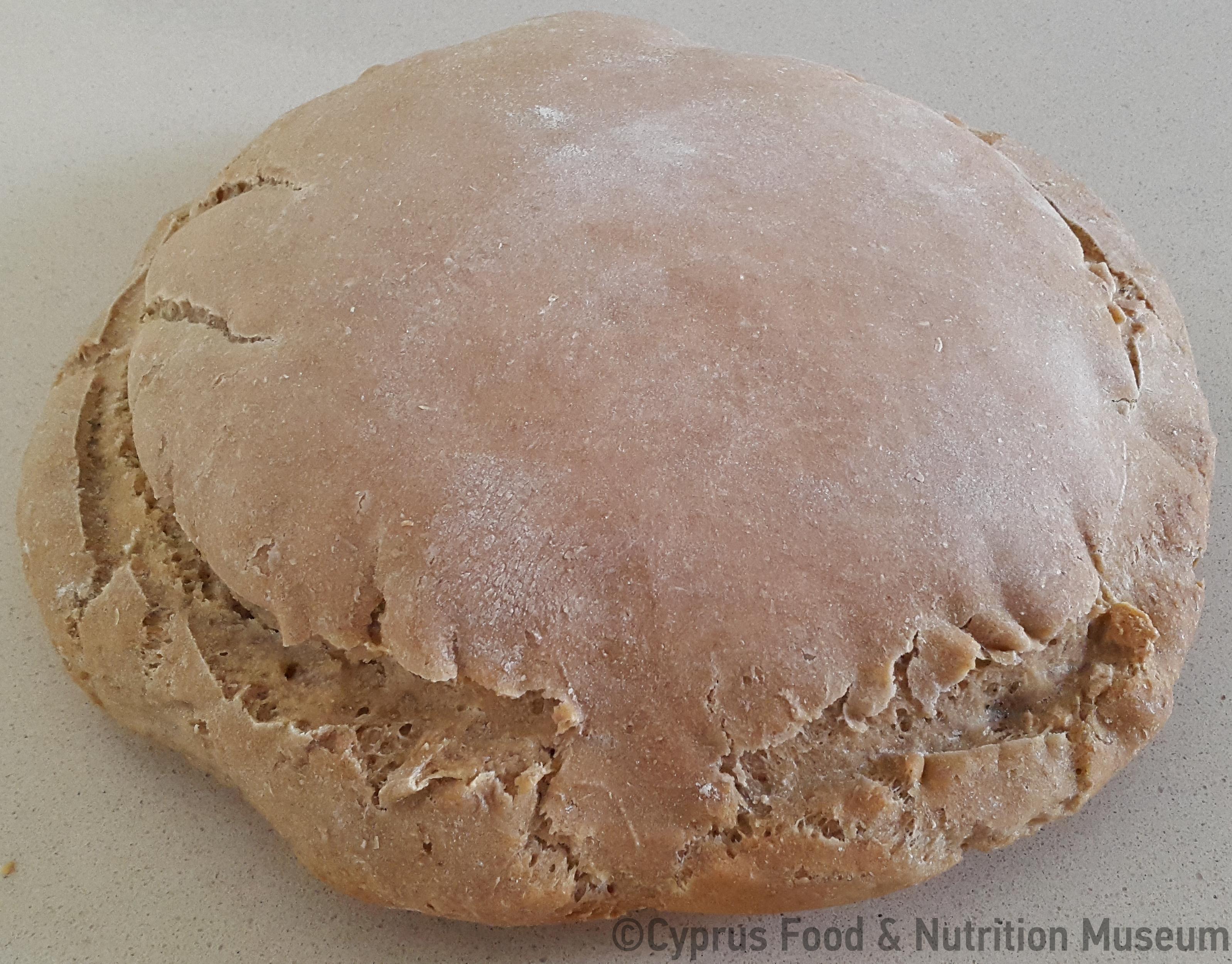"... gradually incorporate all the flour, adding water when needed, and knead the dough well. Cover it for a while to rise.” (Sotira Kyriakou, Kyperounda)
Name - Recipe
Ψωμί σιταρένιο.
Version A
1½ kg wheat flour
2½-3 glasses lukewarm water
2 tbsp sourdough starter
A pinch of salt
2 tbsp sesame seeds
¼ tsp aniseed
Version B
Flour as much as needed
Sourdough starter (the size of an orange)
2 jisve* hot water (80ml)
½ teaspoon salt
½ teaspoon sugar
*jisve=jesve in Turkish = greek coffee pot= 40ml
Version A
Put the wheat flour on one side of a basin and the starter on the edge, which you will dissolve in lukewarm water. Add the salt and gradually incorporate all the flour, adding water when necessary, and knead the dough well. Cover the dough for a while to rise. Then cut a piece of the dough and shape a loaf of bread. Sprinkle with sesame seeds and let it proof. When it is ready, place it in the oven and bake for one hour. (Sotira Kyriakou, 36 years old, Kyperounda)
Version B
Arrange the flour on one side of the (rectangle) basin and the starter on the other side. Add the water, salt and sugar to the starter and dissolve it. Drag the flour from the other side of the basin, as much as needed, and begin to knead the dough until it is firm. Have a bowl with hot water to wet your hands and knead it again until it is soft. Add also a bit of hot water in the basin to soften the dough. Let the dough rest for 10 minutes. Then wet your hand and cut a piece of dough and put it on a floured board (a wooden board used to knead/shape the dough). Roll the dough on the flour until the dough is no longer sticky. Lift it up and turn it in between your hands to give it a nice round shape and flip it over the bread mould. Repeat the same process for as many loaves as you want (and according to how many can fit in the moulds of the board). Cover the loaves and let them proof. At this point, prepare the wood-fired oven so that it is ready to bake the loaves. When it is hot, place the coals aside and take a bucket of water and a piece of cloth wrapped around a piece of wood and wipe the oven until it is clean. In order to know when the temperature is right for baking, sprinkle inside some flour. If the flour burns then try again until the flour stays there and turns "red". Then take the mould board near the oven, put the loaves one by one onto the peel, score them all around, and put them into the wood-fired oven to bake. (Flourou K. Parpouna, 80 years old from Lysi)
Baking in the oven.
Today Flourou K. Parpouna is baking bread in a gas oven. The oven she uses is preheated for 15-20 minutes on high heat. She places the bread on parchment paper inside a baking tray and puts the bread in the oven. Twenty minutes later she puts a small bowl of water under the baking tray (at the bottom of the oven) to prevent the bottom of the bread from burning. Then, she lowers the oven temperature to half so that the beard browns on top. In about an hour the bread is ready. In the old days, when the loaves of bread were baked, they were left to cool for a while before placing them in woven baskets which were covered at the bottom with a piece of cloth. (Flourou K. Parpouna, 80 years old from Lysi)
Functional and symbolic role
All the housewives would make bread in their homes since there were no ovens to buy ready-made bread. If a housewife did not know how to knead bread for her family, it was regarded as shameful for her and her family. There were times when each housewife would bake a dozen or so loaves of bread twice a week since it was either the main food in their diet or bread would accompany any other food they would eat. (Flourou K. Parpouna, 80 years old from Lysi)
"In Cyprus, bread kneading started a long time ago since wheat is one of the main agricultural products of the island. The soil and climatic conditions of the island favour the production of cereal products, hence, a large part of the population which was basically rural turned towards making a living out of agriculture. Recognising the great nutritional value of wheat, the Greeks of Cyprus, like other cultures, adapted their dietary habits and needs to consume this food and wheat and its derivatives, especially bread, became the most basic element of their daily diet' (Kypri and Protopapa 2003).
"Bread in people's consciousness, because of its usefulness and nutritional value, acquired a special power, enhanced by the sacredness attributed to bread by the Christian religion with its consecration as the "body of Christ". This power gave important qualities to bread, over and above its material value, which earned it a prominent place in popular worship and everyday life. According to popular belief, bread had the power, since it was so sacred, to protect people and prevent evil. Bread in particular, especially the one which had been blessed by the church, was believed to have healing properties in addition to its protective power. This bread and other dough preparations became associated with various customs related to human life and activity; sometimes in the form of breads that were devotional or thanksgiving to the divine, in other times in the form of various other dough preparations. Bread was associated with all the great festivals of Christianity, with the feasts dedicated to Virgin Mary and the saints, and with all the special moments of life, whether joyful or mournful. Essential and valuable for the survival of man, bread was used to assist the poor, it was associated with guests' hospitality, it was a means of healing, it was a means of measuring social status and in general it was a carrier of various beliefs and values, characteristic of the traditional society of Cyprus." (Kypri and Protopapa 2003)
"The close association of bread with popular worship and the importance given to it in various events of traditional life, made people focus on its special attention and care. All the stages of its preparation, the preparation of the sourdough starter, kneading and baking, were characterised by actions that expressed a strong belief in its sacredness. The use of bread aa well as people's attitude towards it were also characterised by the same reverence, since in many cases when the bread would fall down, they would embrace it and say 'Christ'." (Kypri and Protopapa 2003)
Additional information and bibliography
In cases where families would not have wheat, they would thresh barley stalks and then proceed with converting it into flour. Flourou K. Parpouna reports that barley bread was rarely made in her village. She herself has never made it but she used to watch her mother making it when she was young. (Flourou K. Parpouna, 80 years old from Lysi)
Kypri, T. D. and Protopapa, K. A. (2003). Traditional bread and pastries of Cyprus (Publications of the Centre for Scientific Research XVIII), Centre for Scientific Research, Nicosia.
Oral testimonies: Sotira Kyriakou, 36 years old, Kyperounda (see. Kourri, P. and Lazarou, S. (eds.) (2007). Traditional recipes of the village of Kyperounda, unpublished data).
Flourou K. Parpouna, 80 years from Lysi. Recorded by Christiana Parpouna, October 2010. Edited by Stalo Lazarou.
Stalo Lazarou, Christiana Parpouna

